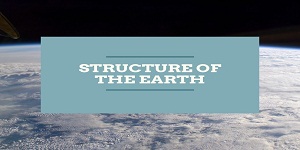What is Ocean Currents?
Large amounts of water in the oceans move from one part to the other. It may take the form of a current or a drift. The constant flow of water on the surface of the ocean as a stream in a definite direction is called an ocean current. These currents are swift and narrow with a speed ranging from two to ten kilometres per hour. However, the moving mass of water, at times, takes the form of a broad and slow-moving shallow drift. The speed of such drifts varies from one to three kilometres per hour.
Ocean currents are of two kinds- the warm currents and the cold currents. Current moving from the equatorial region towards the Poles are known as warm currents. Current that flow towards the equator from polar areas are termed as cold currents. The temperature of a warm current or a cold current is only slightly higher or lower respectively than that of the surrounding water.
Effects of Ocean Currents:
Ocean currents have considerable influence on the climate, agriculture and other economic activities of the coastal regions and the islands near which they flow. The warm currents tend to raise the temperature making a place warmer for its latitude, while the cold currents make a place colder. For example- the Kuroshio current in the Pacific Ocean and the Gulf Stream in the Atlantic Ocean modify the climates of Southern Japan and the eastern part of USA respectively.
As a result, the ports of even polar regions remain free from ice during winter. For example- the coast of Norway within the Arctic Circle remains free from ice even in winter due to the warm North Atlantic Drift. On the other hand, the Labrador coast, which is on a lower latitude, remains frozen during the same period due to the cold Labrador current.
Winds blowing over warm currents absorb moisture and bring heavy rainfall over coastal areas. Eastern USA, Ireland and Britian receive such rains. On the other hand, winds passing over cold currents, become dry and cool and bring little or scanty rainfall to the coastal areas. This factor is partly responsible for the location of hot deserts of the world at or near the coasts which are washed by cold currents. Atacama deserts in South America is a good example.
Planktons are abundant in regions where warm and cold currents meet. Hence, they support fish in large numbers. Such areas are important fishing grounds of the world. Meeting of warm and cold currents produces very thick fog. This is dangerous for ships as visibility is reduced. One such region is near Newfoundland where the warm Gulf Stream meets the cold Labrador current.
Currents also have a definite influence on navigation. A ship sailing down the current will surely go faster. Ships, therefore, prefer to go with the current because it helps them save time and fuel. Warm currents also help in melting icebergs which are a menace to navigation.









Comments (No)